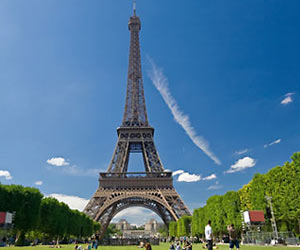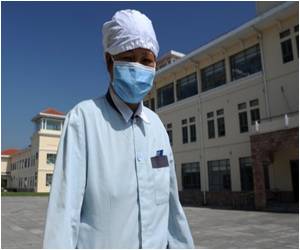Tugging ropes and bellowing chants, five men hoist from the water a huge spidery frame gripping a web of fishing net - a centuries-old custom on the southern Indian coast.

"It's very hard work. Less fish, less money. I can't look after a family pulling these nets," said John Kalathil Barried, a 62-year-old in a striped Adidas cap and a skirt-like Indian 'lungi'.
The rare fishing contraptions are installed on the land and comprise an inventive system of wooden poles, weights and pulleys, whose origins in India are muddled. Some accounts say the nets were introduced by Chinese eunuch Zheng He, an explorer, in the 15th century, or by Chinese traders from the earlier court of Kublai Khan.
But locals insist they were in fact brought in by the Portuguese, who ruled Fort Kochi for over a century until 1663, when the commercial hub was captured by the Dutch. Supporting this theory is the Portuguese vocabulary still used to describe parts of the nets, as well as the fishermen's Christian heritage.
"The Portuguese brought in such a lot. Coffee, cashew nuts, tapioca, so many things we cultivate today were brought in by them," said K.J. Sohan, a former mayor of Kochi.
He said the Portuguese adopted the originally smaller nets during their travels further east along the Mekong River, which flows through China and Indochina.
Though their Kochi copies grew in size, they later shrank in number: 22 structures sat on the coast three decades ago, say the fishermen, but now they have nearly halved to 12, despite their rising stature as a tourist draw.
V.R. Simon, one of the oldest fishermen at 75, gave various reasons for his livelihood's decline.
"Small boats surround us and fish with their own nets," he said, also blaming nearby factories polluting the waters and the 2004 tsunami, after which they saw a drop in catch.
"We pull the nets, tourists come, they give us something and that's how we survive." Declining fish stocks are a concern well beyond Fort Kochi, according to Professor Bhanu Kumar, from the meteorology and oceanography department at India's Andhra University. Climate change, industrial pollution and declining mangrove cover along the Indian coastline -- "all these reasons are really causing big havoc to the fish," he told AFP.
While technology now exists to help trawlers at sea locate waters ripe for fishing, this is adding to the pressure on fish stocks -- and is of little help to those at the stationary Chinese nets.
A flicker of hope came with a recent visit by Chinese diplomats -- encouraged by the heritage link -- to see if they could offer "a symbol of cooperation", said Kerala's tourism secretary Suman Billa.
No formal proposals have been made, however, and Kochi residents feared India would decline outside assistance. The Keralan government has meanwhile sanctioned 15 million rupees ($242,000) for refurbishing the nets, whose parts need regular replacement and maintenance.
But with catches on the decline, it seems more sustainable solutions are needed to preserve the heritage site -- and not only as a picturesque emblem for tourism brochures.
"It's a livelihood for these people as well as the iconic signature of Kochi," said Sohan, the former mayor, also chairman of a town planning committee. He said the government should provide insurance for the fishermen, as well as subsidised timber -- they currently use iron in some of their poles instead of the traditional and more expensive teak.
The fishermen also need to add value to their shrinking catch, perhaps by cooking and serving fish to customers near the nets in a "you buy, we fry" arrangement, Sohan suggested.
"What the fishermen sell for 100 rupees ($1.60), the hotels sell for 500 rupees -- why can't they?" he said.
"It's a challenge of survival."
For now the fishermen keenly welcome visitors to their intriguing machines, letting them pull on the ropes and snap souvenir pictures in exchange for donations. "We live like beggars," said Simon, as the latest curious holidaymakers approached.
Source-AFP
 MEDINDIA
MEDINDIA




 Email
Email




